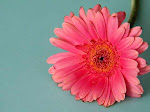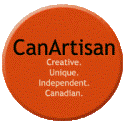Pysanky, or Ukranian Easter Eggs may be one of the most awe-inspiring crafts in the world. The intricacy of the designs astound me. It is also a labour intensive method of design, which requires many precise and carefully co-ordinated steps before achieving a final product.
In short, pysanky is a wax-resist method of dying eggs. The design which you hope to achieve will be first drawn on the egg using a kistka. This is a tool which is lightly heated, dipped in beeswax, and then used to trace the design onto the egg. Next, the egg is dipped in the first dye bath. The dye will not penetrate any area to which the wax has been applied. These steps are repeated each time a new design element is to be added. The design and colour layers are thus built upon gradually until the desired design is completed.
Traditionally, eggs are dipped into the lightest colours first and then progressively dipped into the darker colours. During a brief conversation with Toronto-based artist and pysanky designer, Katya Trischuk, she told me that her preferred method is to actually work somewhat contrary to the traditional method. She believes that the yellow gives additional lift to previous colours. She likes to begin with pink, then yellow, green, orange, and finally black.
Once the egg has been given its final dye -typically a black dye - the dye needs to be gently removed from the egg. There are two methods for doing this: the traditional candle method or bleaching method. Eggs are then varnished to protect the designs.
The intricate designs and the colours used on the eggs are steeped in tradition. It was appropriate to gift elderly persons with intricately patterned and darkly dyed eggs to symbolise a life richly lived. A lighter, less decorated egg conversely was given to a younger person to represent the relatively blank slate that there life was to that point.
Of the many design patterns, they typically fall into five distinct styles. These are:
Geometric: These designs are typically divided into equal parts using straight lines. Other less rigid geometric motifs may appear within these geometric shapes. These designs may include curls, spirals, tripods and dots. Many of these are carried over from pagan symbology. Often included in the geometric patterns are eternity styles, which are meandering, wiggling lines with no beginning and no end. These are believed to trap any evil spirits which may enter the home.
 Phytomorphic: These designs are based on plants and their parts: trees, flowers, wheat, and fruit. The use of these designs,symbolised among other things, the rebirth of nature following winter, and thus ensured a good harvest come autumn.
Phytomorphic: These designs are based on plants and their parts: trees, flowers, wheat, and fruit. The use of these designs,symbolised among other things, the rebirth of nature following winter, and thus ensured a good harvest come autumn. Scevomorphic: These designs are representative of man-made objects, such as rakes, ladders, baskets and nets. They represented the ties to the land, as the Ukraine was largely an agricultural country.
Scevomorphic: These designs are representative of man-made objects, such as rakes, ladders, baskets and nets. They represented the ties to the land, as the Ukraine was largely an agricultural country. Zoomorphic: Animal motifs (birds, horses, rams, deer) occur less commonly on pysanky eggs. These motifs are more common to the Carpathian mountain regions. The motifs purpose was intended to provide the owner with the desired traits of the animal, while at the same time endowing these animals with long, healthy lives.
Zoomorphic: Animal motifs (birds, horses, rams, deer) occur less commonly on pysanky eggs. These motifs are more common to the Carpathian mountain regions. The motifs purpose was intended to provide the owner with the desired traits of the animal, while at the same time endowing these animals with long, healthy lives. Cosmomorphic: The oldest and most important symbol is the sun. It is often depicted with an eight-sided star. The sun or star symbol has been considered the most powerful of all symbols as it is believed to protect the owner from sickness, bad luck and the evil eye, while also representing life, warmth and the eternal love of God.
Cosmomorphic: The oldest and most important symbol is the sun. It is often depicted with an eight-sided star. The sun or star symbol has been considered the most powerful of all symbols as it is believed to protect the owner from sickness, bad luck and the evil eye, while also representing life, warmth and the eternal love of God. Christian Symbols: There are few Christian symbols that do appear in pysanky designs. The most common is a stylized church. Others include a cross and a triangle with a circle inside which represents the eye of god.
Christian Symbols: There are few Christian symbols that do appear in pysanky designs. The most common is a stylized church. Others include a cross and a triangle with a circle inside which represents the eye of god. All of the stunning eggs shown above were created by Katya Trischuk. Katya is a Toronto based artist and an interior designer by trade. Originally from the Ukraine, she came to Canada twenty years ago. She has also been designing eggs for twenty years and she has supplied them to sellers and buyers all over North America. If you have a pysanky egg at home, flip it over and look for her initials as there is a very good chance it may be one of hers. In time, you may see eggs appearing from her eight year old protege, Emilia.
All of the stunning eggs shown above were created by Katya Trischuk. Katya is a Toronto based artist and an interior designer by trade. Originally from the Ukraine, she came to Canada twenty years ago. She has also been designing eggs for twenty years and she has supplied them to sellers and buyers all over North America. If you have a pysanky egg at home, flip it over and look for her initials as there is a very good chance it may be one of hers. In time, you may see eggs appearing from her eight year old protege, Emilia.If you live in the Toronto area and wish to learn more about the traditional art of pysanky and of Katya, tune in to "Kontact" on OMNI TV at 1pm on April 3. The program will be airing a feature with Katya and her craft. Also, be sure to check her etsy shop for further examples of her work for purchase.







3 comments:
Great post Carol. I watched my friend's mother in law dip eggs once. Such a fascinating intricate process. We have fun painted wooden Ukrainian eggs we put out at Easter.
Brigitte: My mom had wooden Ukranian eggs too. I used to love them!! Still do. So beautiful.
I would love to witness someone actually doing this craft.
I loved when Mom got out the little stand with the gorgeous eggs for the Easter holiday. I love the feel of the grooves carved into the wood. So pretty and bring back such happy memories.
Post a Comment